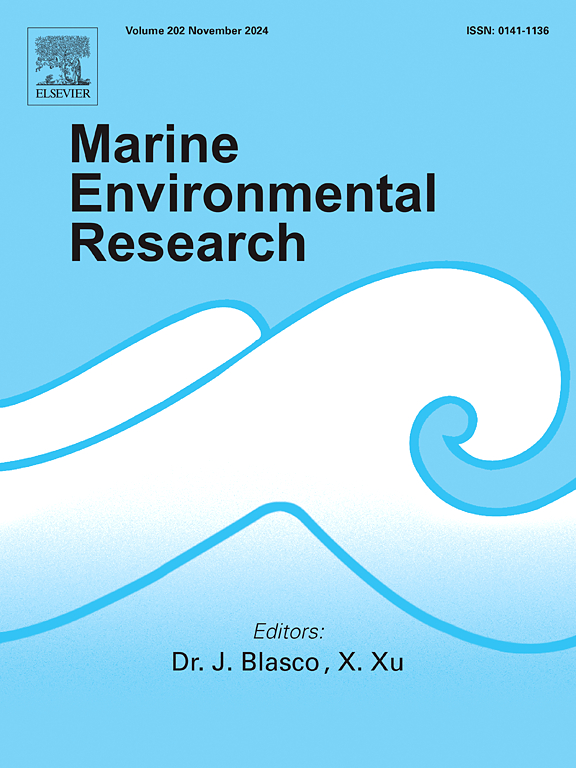Microplastic contamination and biological alterations in Atlantic wild fish populations, and human health risks associated to fillet consumption
IF 3
3区 环境科学与生态学
Q2 ENVIRONMENTAL SCIENCES
引用次数: 0
Abstract
This study tested the hypothesis that long-term exposure to microplastics (MPs) is causing biological alterations in North Atlantic wild populations of Trisopterus luscus (pouting) and Merluccius merluccius (hake). It also estimated the human risk of MP intake (HRI) through fillet consumption, and combined the HRI and polymer health hazard in the Risk of Intake and Polymer Hazard Index (RIPHI). Fish (103) were analysed for MPs (gastrointestinal tract, gills, liver, brain, muscle), biomarkers (physical condition, neurotoxicity, energy production, oxidative stress and damage) and general stress (Integrated Biomarker Response – IBR). After particle analysis (Fourier Transform Infrared spectroscopy, Raman spectroscopy) and data correction for contamination, MPs accounted for 77 % of 311 particles. From 103 fish, 79 % contained MPs. The overall mean concentration ±SD was 0.09 ± 0.09 MP g−1 (2.32 ± 2.35 MPs ind−1) with no significant interspecific differences (p > 0.05). Among body sites, brain had the highest MP concentration (pouting: 0.6 MP g−1; hake: 0.5 MP g−1). Most abundant polymers were polyethylene (40 %), polypropylene (21 %) and polymethyl methacrylate (12 %). Fragments (<150 μm) predominated. MP profiles pointed to prey-predator transfer. Fish with MPs had higher stress levels (IBR, pouting: 0.317; hake: 0.200) than specimens without MPs (pouting: 0.0; hake: 0.062). Oxidative stress was the effect most clearly linked to MPs. Hake fillet poses lower HRI (e.g., 0.2 to 1.5 MPs day−1) than pouting fillet (e.g., 0.4 to 3.0 MPs day−1). RIPHI values showed the opposite trend (e.g., hake: 138 to 1038; pouting: 113 to 845), indicating medium to high risk to human consumers. Findings related long-term MPs exposure in the natural habitat with biological alterations in wild fish populations, highlight the importance of food diversification for a healthy alimentation, and stress the urgent need of reducing MPs pollution to promote ecosystem sustainability and global health.

求助全文
约1分钟内获得全文
求助全文
来源期刊

Marine environmental research
环境科学-毒理学
CiteScore
5.90
自引率
3.00%
发文量
217
审稿时长
46 days
期刊介绍:
Marine Environmental Research publishes original research papers on chemical, physical, and biological interactions in the oceans and coastal waters. The journal serves as a forum for new information on biology, chemistry, and toxicology and syntheses that advance understanding of marine environmental processes.
Submission of multidisciplinary studies is encouraged. Studies that utilize experimental approaches to clarify the roles of anthropogenic and natural causes of changes in marine ecosystems are especially welcome, as are those studies that represent new developments of a theoretical or conceptual aspect of marine science. All papers published in this journal are reviewed by qualified peers prior to acceptance and publication. Examples of topics considered to be appropriate for the journal include, but are not limited to, the following:
– The extent, persistence, and consequences of change and the recovery from such change in natural marine systems
– The biochemical, physiological, and ecological consequences of contaminants to marine organisms and ecosystems
– The biogeochemistry of naturally occurring and anthropogenic substances
– Models that describe and predict the above processes
– Monitoring studies, to the extent that their results provide new information on functional processes
– Methodological papers describing improved quantitative techniques for the marine sciences.
 求助内容:
求助内容: 应助结果提醒方式:
应助结果提醒方式:


